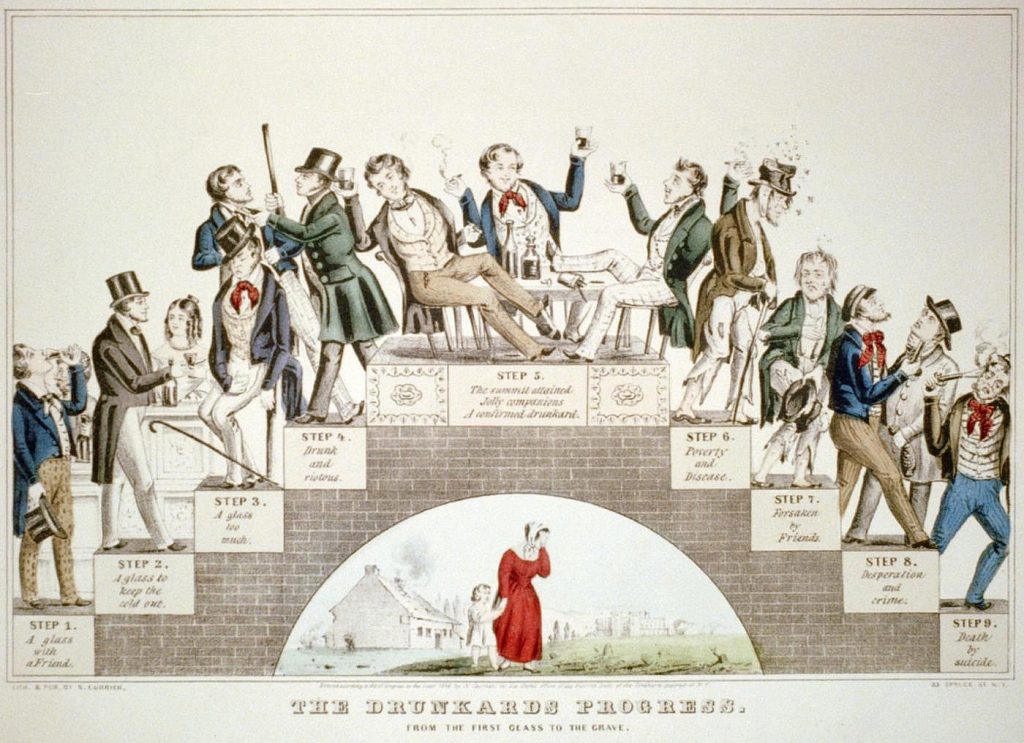While most Americans liberally consumed and accepted alcohol throughout the eighteenth century, the Temperance Movement had been ignited by the 1830s (Movement). The first temperance organizations were established in 1808 in New York and in 1813 in Massachusetts (Movement). In 1833, there were over 6,000 local temperance societies around the United States (Movement). Women held the reins of the movement, and it spread internationally due to the work of prominent leaders such as Carry Nation (Movement). These enduring values of “moralism, efficiency, and health” were positioned in opposition to the ideals of the Church, the new nation, and the lessons of doctors (Reform). As a result of this stark contrast, temperance and abstinence were considered the morally good choice.
Even more, the consequences of overindulging in alcohol were solely considered negative. Overindulgence, people feared, “led to alcoholism, incurred social costs, hurt productivity, and harmed one’s body” (Reform). Drinking was a sin, and abstinence was the way to save oneself from that sin. The contrast of morality versus abstinence made the choice easy for many spiritually-driven Americans; consequently, the Temperance Movement took hold in American society and ultimately led to Prohibition.

A lithograph by Nathaniel Currier supporting the Temperance Movement, 1846 (Library of Congress)